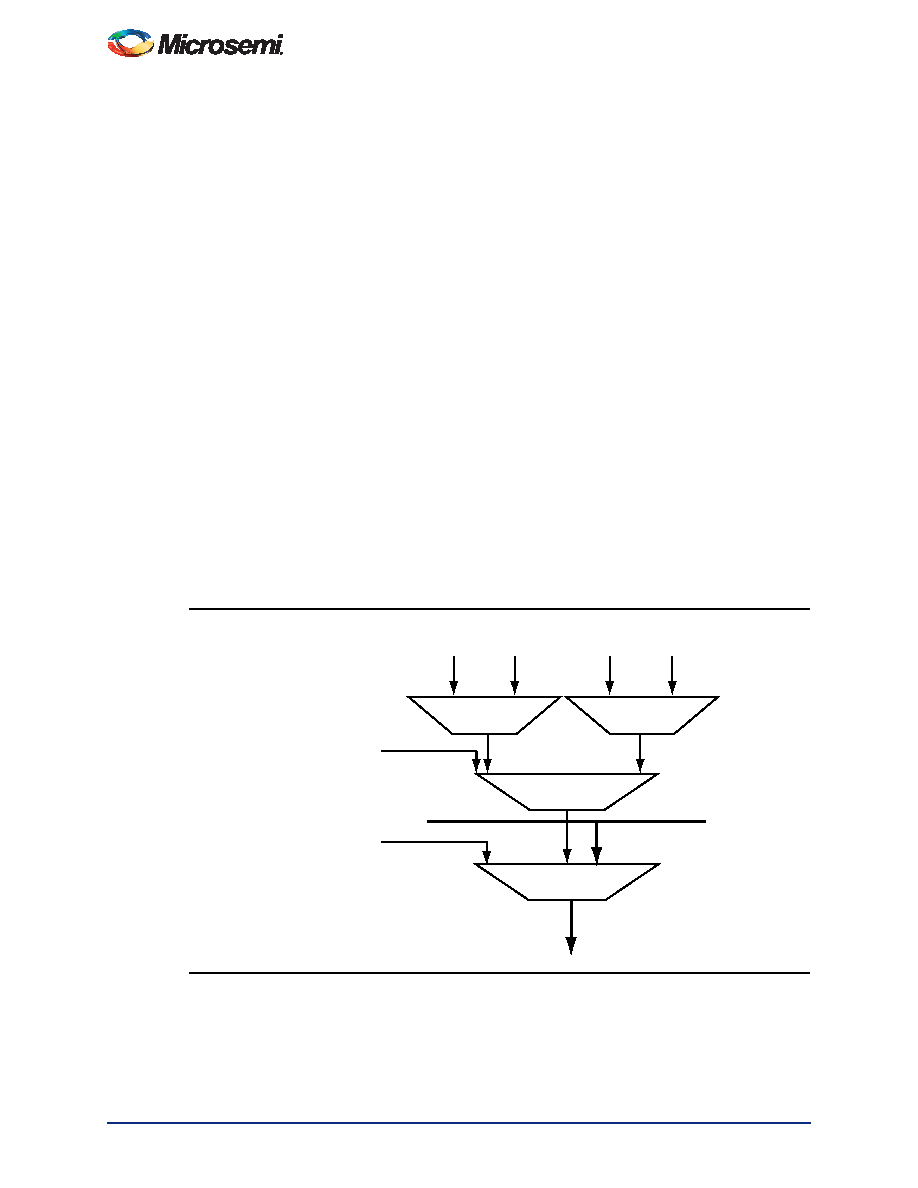- 您現(xiàn)在的位置:買賣IC網(wǎng) > PDF目錄4416 > AFS600-1PQG208I (Microsemi SoC)IC FPGA 4MB FLASH 600K 208PQFP PDF資料下載
參數(shù)資料
| 型號(hào): | AFS600-1PQG208I |
| 廠商: | Microsemi SoC |
| 文件頁(yè)數(shù): | 224/334頁(yè) |
| 文件大小: | 0K |
| 描述: | IC FPGA 4MB FLASH 600K 208PQFP |
| 標(biāo)準(zhǔn)包裝: | 24 |
| 系列: | Fusion® |
| RAM 位總計(jì): | 110592 |
| 輸入/輸出數(shù): | 95 |
| 門數(shù): | 600000 |
| 電源電壓: | 1.425 V ~ 1.575 V |
| 安裝類型: | 表面貼裝 |
| 工作溫度: | -40°C ~ 100°C |
| 封裝/外殼: | 208-BFQFP |
| 供應(yīng)商設(shè)備封裝: | 208-PQFP(28x28) |
第1頁(yè)第2頁(yè)第3頁(yè)第4頁(yè)第5頁(yè)第6頁(yè)第7頁(yè)第8頁(yè)第9頁(yè)第10頁(yè)第11頁(yè)第12頁(yè)第13頁(yè)第14頁(yè)第15頁(yè)第16頁(yè)第17頁(yè)第18頁(yè)第19頁(yè)第20頁(yè)第21頁(yè)第22頁(yè)第23頁(yè)第24頁(yè)第25頁(yè)第26頁(yè)第27頁(yè)第28頁(yè)第29頁(yè)第30頁(yè)第31頁(yè)第32頁(yè)第33頁(yè)第34頁(yè)第35頁(yè)第36頁(yè)第37頁(yè)第38頁(yè)第39頁(yè)第40頁(yè)第41頁(yè)第42頁(yè)第43頁(yè)第44頁(yè)第45頁(yè)第46頁(yè)第47頁(yè)第48頁(yè)第49頁(yè)第50頁(yè)第51頁(yè)第52頁(yè)第53頁(yè)第54頁(yè)第55頁(yè)第56頁(yè)第57頁(yè)第58頁(yè)第59頁(yè)第60頁(yè)第61頁(yè)第62頁(yè)第63頁(yè)第64頁(yè)第65頁(yè)第66頁(yè)第67頁(yè)第68頁(yè)第69頁(yè)第70頁(yè)第71頁(yè)第72頁(yè)第73頁(yè)第74頁(yè)第75頁(yè)第76頁(yè)第77頁(yè)第78頁(yè)第79頁(yè)第80頁(yè)第81頁(yè)第82頁(yè)第83頁(yè)第84頁(yè)第85頁(yè)第86頁(yè)第87頁(yè)第88頁(yè)第89頁(yè)第90頁(yè)第91頁(yè)第92頁(yè)第93頁(yè)第94頁(yè)第95頁(yè)第96頁(yè)第97頁(yè)第98頁(yè)第99頁(yè)第100頁(yè)第101頁(yè)第102頁(yè)第103頁(yè)第104頁(yè)第105頁(yè)第106頁(yè)第107頁(yè)第108頁(yè)第109頁(yè)第110頁(yè)第111頁(yè)第112頁(yè)第113頁(yè)第114頁(yè)第115頁(yè)第116頁(yè)第117頁(yè)第118頁(yè)第119頁(yè)第120頁(yè)第121頁(yè)第122頁(yè)第123頁(yè)第124頁(yè)第125頁(yè)第126頁(yè)第127頁(yè)第128頁(yè)第129頁(yè)第130頁(yè)第131頁(yè)第132頁(yè)第133頁(yè)第134頁(yè)第135頁(yè)第136頁(yè)第137頁(yè)第138頁(yè)第139頁(yè)第140頁(yè)第141頁(yè)第142頁(yè)第143頁(yè)第144頁(yè)第145頁(yè)第146頁(yè)第147頁(yè)第148頁(yè)第149頁(yè)第150頁(yè)第151頁(yè)第152頁(yè)第153頁(yè)第154頁(yè)第155頁(yè)第156頁(yè)第157頁(yè)第158頁(yè)第159頁(yè)第160頁(yè)第161頁(yè)第162頁(yè)第163頁(yè)第164頁(yè)第165頁(yè)第166頁(yè)第167頁(yè)第168頁(yè)第169頁(yè)第170頁(yè)第171頁(yè)第172頁(yè)第173頁(yè)第174頁(yè)第175頁(yè)第176頁(yè)第177頁(yè)第178頁(yè)第179頁(yè)第180頁(yè)第181頁(yè)第182頁(yè)第183頁(yè)第184頁(yè)第185頁(yè)第186頁(yè)第187頁(yè)第188頁(yè)第189頁(yè)第190頁(yè)第191頁(yè)第192頁(yè)第193頁(yè)第194頁(yè)第195頁(yè)第196頁(yè)第197頁(yè)第198頁(yè)第199頁(yè)第200頁(yè)第201頁(yè)第202頁(yè)第203頁(yè)第204頁(yè)第205頁(yè)第206頁(yè)第207頁(yè)第208頁(yè)第209頁(yè)第210頁(yè)第211頁(yè)第212頁(yè)第213頁(yè)第214頁(yè)第215頁(yè)第216頁(yè)第217頁(yè)第218頁(yè)第219頁(yè)第220頁(yè)第221頁(yè)第222頁(yè)第223頁(yè)當(dāng)前第224頁(yè)第225頁(yè)第226頁(yè)第227頁(yè)第228頁(yè)第229頁(yè)第230頁(yè)第231頁(yè)第232頁(yè)第233頁(yè)第234頁(yè)第235頁(yè)第236頁(yè)第237頁(yè)第238頁(yè)第239頁(yè)第240頁(yè)第241頁(yè)第242頁(yè)第243頁(yè)第244頁(yè)第245頁(yè)第246頁(yè)第247頁(yè)第248頁(yè)第249頁(yè)第250頁(yè)第251頁(yè)第252頁(yè)第253頁(yè)第254頁(yè)第255頁(yè)第256頁(yè)第257頁(yè)第258頁(yè)第259頁(yè)第260頁(yè)第261頁(yè)第262頁(yè)第263頁(yè)第264頁(yè)第265頁(yè)第266頁(yè)第267頁(yè)第268頁(yè)第269頁(yè)第270頁(yè)第271頁(yè)第272頁(yè)第273頁(yè)第274頁(yè)第275頁(yè)第276頁(yè)第277頁(yè)第278頁(yè)第279頁(yè)第280頁(yè)第281頁(yè)第282頁(yè)第283頁(yè)第284頁(yè)第285頁(yè)第286頁(yè)第287頁(yè)第288頁(yè)第289頁(yè)第290頁(yè)第291頁(yè)第292頁(yè)第293頁(yè)第294頁(yè)第295頁(yè)第296頁(yè)第297頁(yè)第298頁(yè)第299頁(yè)第300頁(yè)第301頁(yè)第302頁(yè)第303頁(yè)第304頁(yè)第305頁(yè)第306頁(yè)第307頁(yè)第308頁(yè)第309頁(yè)第310頁(yè)第311頁(yè)第312頁(yè)第313頁(yè)第314頁(yè)第315頁(yè)第316頁(yè)第317頁(yè)第318頁(yè)第319頁(yè)第320頁(yè)第321頁(yè)第322頁(yè)第323頁(yè)第324頁(yè)第325頁(yè)第326頁(yè)第327頁(yè)第328頁(yè)第329頁(yè)第330頁(yè)第331頁(yè)第332頁(yè)第333頁(yè)第334頁(yè)

Device Architecture
2-14
Revision 4
VersaNet Global Networks and Spine Access
The Fusion architecture contains a total of 18 segmented global networks that can access the
VersaTiles, SRAM, and I/O tiles on the Fusion device. There are 6 chip (main) global networks that
access the entire device and 12 quadrant networks (3 in each quadrant). Each device has a total of 18
globals. These VersaNet global networks offer fast, low-skew routing resources for high-fanout nets,
including clock signals. In addition, these highly segmented global networks offer users the flexibility to
create low-skew local networks using spines for up to 180 internal/external clocks (in an AFS1500
device) or other high-fanout nets in Fusion devices. Optimal usage of these low-skew networks can
result in significant improvement in design performance on Fusion devices.
The nine spines available in a vertical column reside in global networks with two separate regions of
scope: the quadrant global network, which has three spines, and the chip (main) global network, which
has six spines. Note that there are three quadrant spines in each quadrant of the device. There are four
quadrant global network regions per device (Figure 2-12 on page 2-13).
The spines are the vertical branches of the global network tree, shown in Figure 2-11 on page 2-12. Each
spine in a vertical column of a chip (main) global network is further divided into two equal-length spine
segments: one in the top and one in the bottom half of the die.
Each spine and its associated ribs cover a certain area of the Fusion device (the "scope" of the spine;
see Figure 2-11 on page 2-12). Each spine is accessed by the dedicated global network MUX tree
architecture, which defines how a particular spine is driven—either by the signal on the global network
from a CCC, for example, or another net defined by the user (Figure 2-13). Quadrant spines can be
driven from user I/Os on the north and south sides of the die, via analog I/Os configured as direct digital
inputs. The ability to drive spines in the quadrant global networks can have a significant effect on system
performance for high-fanout inputs to a design.
Details of the chip (main) global network spine-selection MUX are presented in Figure 2-13. The spine
drivers for each spine are located in the middle of the die.
Quadrant spines are driven from a north or south rib. Access to the top and bottom ribs is from the corner
CCC or from the I/Os on the north and south sides of the device. For details on using spines in Fusion
devices, see the application note Using Global Resources in Actel Fusion Devices.
Figure 2-13 Spine-Selection MUX of Global Tree
Internal/External
Signal
Internal/External
Signal
Internal/External
Signals
Spine
Global Rib
Global Driver MUX
Tree Node MUX
Internal/External
Signals
Tree Node MUX
相關(guān)PDF資料 |
PDF描述 |
|---|---|
| M1AFS600-1PQ208I | IC FPGA 4MB FLASH 600K 208-PQFP |
| AFS600-1PQ208I | IC FPGA 4MB FLASH 600K 208PQFP |
| AFS600-FG484I | IC FPGA 4MB FLASH 600K 484FBGA |
| M1AFS600-FG484I | IC FPGA 4MB FLASH 600K 484-FBGA |
| ASM43DSES | CONN EDGECARD 86POS .156 EYELET |
相關(guān)代理商/技術(shù)參數(shù) |
參數(shù)描述 |
|---|---|
| AFS600-1PQG256ES | 制造商:ACTEL 制造商全稱:Actel Corporation 功能描述:Actel Fusion Mixed-Signal FPGAs |
| AFS600-1PQG256I | 制造商:ACTEL 制造商全稱:Actel Corporation 功能描述:Actel Fusion Mixed-Signal FPGAs |
| AFS600-1PQG256PP | 制造商:ACTEL 制造商全稱:Actel Corporation 功能描述:Actel Fusion Mixed-Signal FPGAs |
| AFS600-1QN256ES | 制造商:ACTEL 制造商全稱:Actel Corporation 功能描述:Actel Fusion Mixed-Signal FPGAs |
| AFS600-1QN256I | 制造商:ACTEL 制造商全稱:Actel Corporation 功能描述:Actel Fusion Mixed-Signal FPGAs |
發(fā)布緊急采購(gòu),3分鐘左右您將得到回復(fù)。